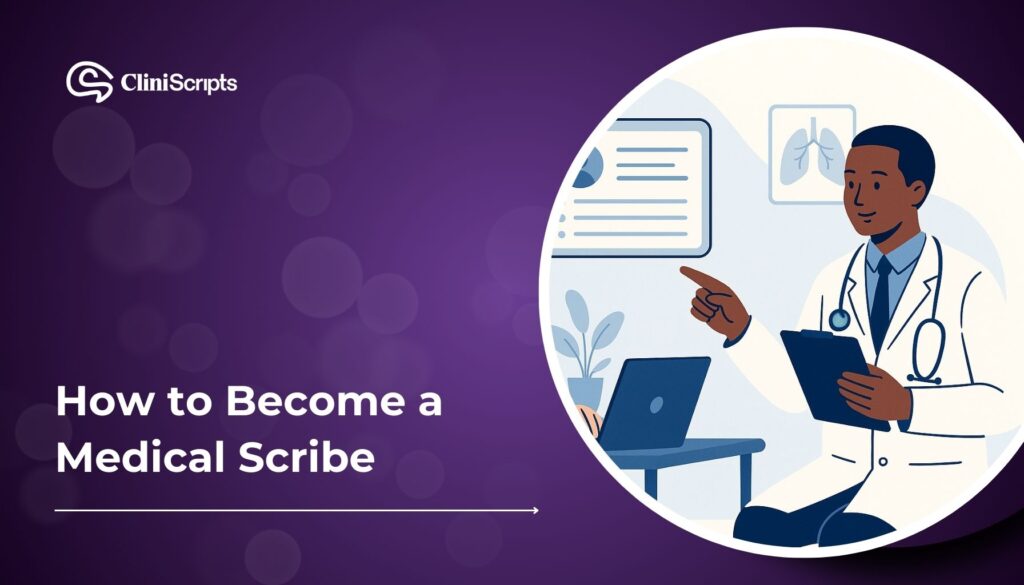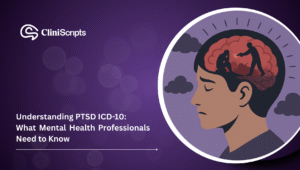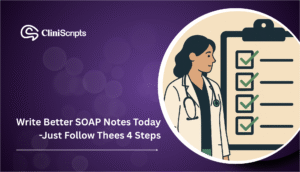Reviewed By Nauman Jaffar
How to Become a Medical Scribe: Job Requirements and Insights
Breaking into the medical field doesn’t always require years of school or medical degrees. If you want to gain real-world clinical exposure, learn fast, and build a solid foundation for a medical career, learning how to become a medical scribe is your ultimate first step. This blog teaches you everything you need to know to begin this exciting journey.
What is a Medical Scribe?
A medical scribe is a trained professional who documents doctor-patient interactions in real-time. They work alongside physicians in hospitals, emergency rooms, and clinics. Their job is to ensure accurate and timely patient data entry into the Electronic Health Record (EHR).
Understanding the Role of a Medical Scribe
Medical scribes are more than note-takers. They serve as the physician’s right hand, enhancing clinical efficiency, reducing the physician’s administrative load, and helping improve patient care delivery.
Importance of Medical Scribes in Healthcare
Medical scribes play a vital role in the modern healthcare ecosystem:
- Improve documentation accuracy
- Speed up patient charting and workflow
- Enhance doctor-patient interaction
- Allow physicians to focus on care, not paperwork
Key Responsibilities of a Medical Scribe
- Documenting patient history and symptoms
- Recording physical exams and lab results
- Managing EHR data entry
- Assisting with coding for billing
- Coordinating documentation with healthcare teams
What are the Job Requirements to Become a Medical Scribe?
Medical scribing is accessible but demands focus and precision. Here’s what you need:
Educational Qualifications for a Scribe Position
- High school diploma or equivalent
- Preferred: college-level courses in biology, anatomy, or health sciences
- Bonus: a degree in pre med or related field
Essential Skills and Competencies
- Fast and accurate typing (at least 60 WPM)
- Strong listening and comprehension
- Familiarity with medical terminology
- Ability to work under pressure
- Professionalism and confidentiality
Certification and Training Programs
While not always required, certification shows dedication:
- American Healthcare Documentation Professionals Group (AHDPG)
- Medical Scribe Certification & Aptitude Test (MSCAT)
- Training platforms: Scribe America, Pro Scribe, Elite Medical Scribes
How to Become a Medical Scribe?
Want to know how to become a medical scribe and stand out? Follow these proven steps:
Steps to Transition into a Medical Scribe Role
- Take a medical terminology or scribing course
- Build a resume highlighting relevant skills
- Apply to hospitals or scribe staffing companies
- Prepare for interviews by understanding clinical workflows
Finding a Scribe Job: Tips and Resources
- Use platforms like Indeed, Glassdoor, and LinkedIn
- Reach out to local hospitals and clinics
- Join scribe forums on Reddit and Quora for leads
- Look into pre-health organizations or campus resources
On-the-Job Training and Experience
Many employers offer paid training:
- Learn EHR software hands-on
- Understand physician expectations
- Practice real-time documentation
- Master workflow and patient confidentiality
Can Medical Scribes Help Premed Students?
Absolutely. Being a medical scribe is a golden opportunity for premed students to build clinical exposure and sharpen their medical understanding.
Valuable Clinical Experience for Premed Students
- Work in real clinical settings
- Understand patient communication
- Learn how doctors think and act
How Medical Scribe Experience Enhances Medical School Applications
- Demonstrates commitment to medicine
- Shows firsthand clinical experience
- Builds confidence for interviews and essays
Shadowing Physicians: An Integral Part of the Learning Process
Medical scribes gain access that’s often hard to get:
- Watch procedures up close
- Understand diagnosis and treatment plans
- Learn about the healthcare system’s inner workings
What Skills are Necessary for a Successful Medical Scribe?
Mastering the job goes beyond typing. Here’s what you need:
Understanding Medical Terminology and Documentation
- Know common medical abbreviations
- Understand diagnostic terms and procedures
- Write clearly and objectively in records
Developing Strong Communication Skills
- Speak clearly with physicians and staff
- Ask the right questions when unsure
- Maintain professional boundaries
Time Management and Organizational Skills in a Clinical Setting
- Stay focused during long shifts
- Manage multiple patients efficiently
- Prioritize tasks based on urgency
What Are the Benefits of Becoming a Medical Scribe?
Becoming a scribe is a powerful step in any healthcare journey:
Gaining Insight into the Medical Field
- Experience live patient care daily
- Understand real-world medicine beyond textbooks
Opportunities for Career Advancement
- Transition into roles like nurse, PA, or physician
- Build a strong application for med school
- Leverage your experience for higher healthcare positions
Building Professional Relationships within the Healthcare Team
- Network with doctors and specialists
- Get references and mentorship
- Learn through collaboration
Is It Time to Start Your Medical Scribe Journey?
If you’re eager to dive into the heart of medicine, want real clinical exposure, and aim to grow fast in healthcare—then now is the time. Don’t wait for permission. Step in, learn, grow, and let the journey begin.
Start now. Find a course. Apply to that position. Your future in healthcare starts with your first shift as a medical scribe.
Common Questions from Quora, Google & Reddit
Q: Do I need experience to become a medical scribe?
A: No. Many positions offer on-the-job training.
Q: Can I work part-time as a medical scribe while in college?
A: Yes. It’s a flexible job ideal for pre-med and college students.
Q: Do medical schools value scribe experience?
A: Absolutely. It adds real clinical value to your application.
Q: What’s the difference between a scribe and a transcriptionist?
A: Scribes work live with doctors. Transcriptionists convert recorded notes.
Q: How long does it take to become a certified medical scribe?
A: Most certification courses take 2–6 weeks, depending on intensity.










